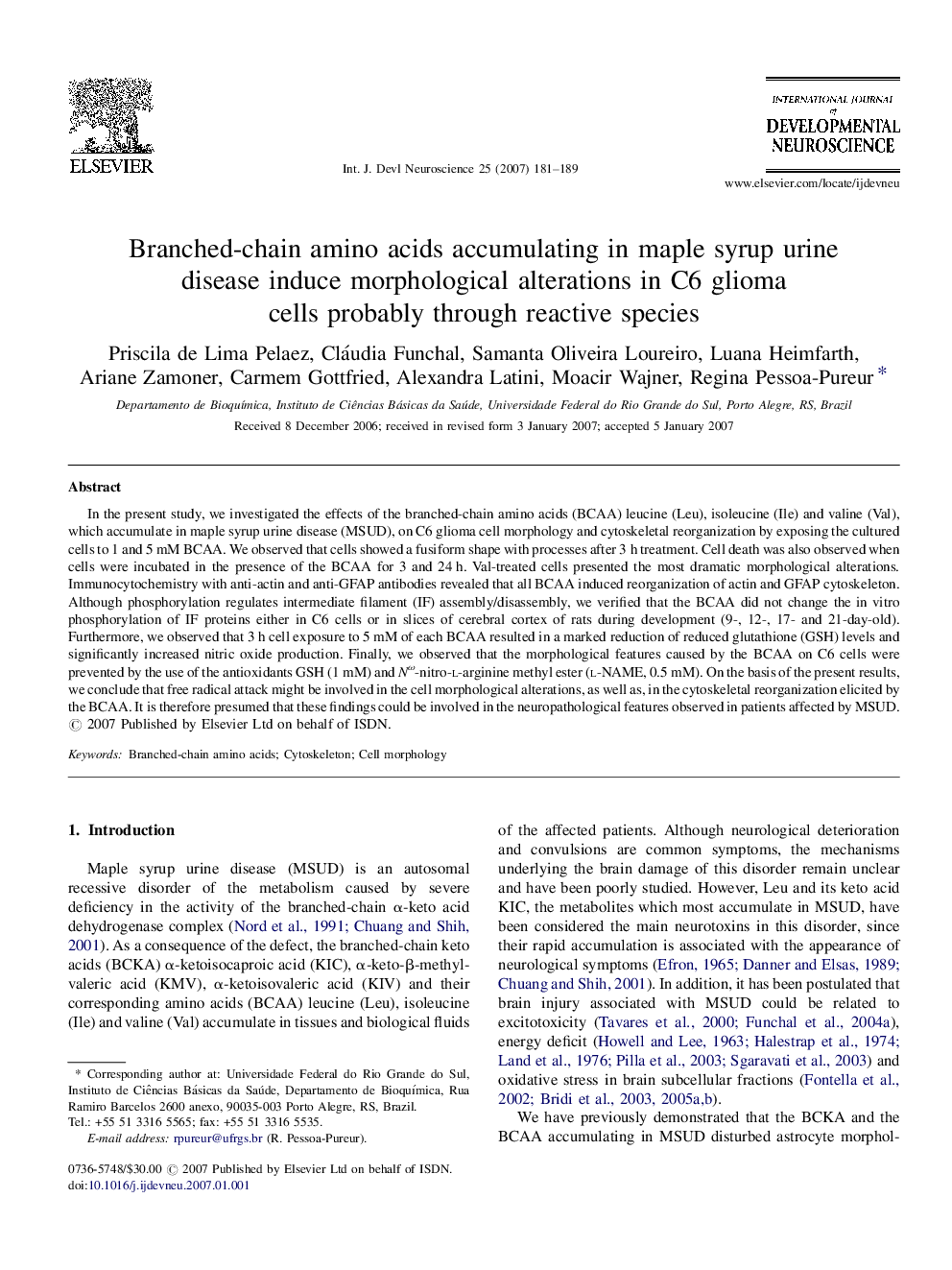| Article ID | Journal | Published Year | Pages | File Type |
|---|---|---|---|---|
| 2787219 | International Journal of Developmental Neuroscience | 2007 | 9 Pages |
In the present study, we investigated the effects of the branched-chain amino acids (BCAA) leucine (Leu), isoleucine (Ile) and valine (Val), which accumulate in maple syrup urine disease (MSUD), on C6 glioma cell morphology and cytoskeletal reorganization by exposing the cultured cells to 1 and 5 mM BCAA. We observed that cells showed a fusiform shape with processes after 3 h treatment. Cell death was also observed when cells were incubated in the presence of the BCAA for 3 and 24 h. Val-treated cells presented the most dramatic morphological alterations. Immunocytochemistry with anti-actin and anti-GFAP antibodies revealed that all BCAA induced reorganization of actin and GFAP cytoskeleton. Although phosphorylation regulates intermediate filament (IF) assembly/disassembly, we verified that the BCAA did not change the in vitro phosphorylation of IF proteins either in C6 cells or in slices of cerebral cortex of rats during development (9-, 12-, 17- and 21-day-old). Furthermore, we observed that 3 h cell exposure to 5 mM of each BCAA resulted in a marked reduction of reduced glutathione (GSH) levels and significantly increased nitric oxide production. Finally, we observed that the morphological features caused by the BCAA on C6 cells were prevented by the use of the antioxidants GSH (1 mM) and Nω-nitro-l-arginine methyl ester (l-NAME, 0.5 mM). On the basis of the present results, we conclude that free radical attack might be involved in the cell morphological alterations, as well as, in the cytoskeletal reorganization elicited by the BCAA. It is therefore presumed that these findings could be involved in the neuropathological features observed in patients affected by MSUD.
